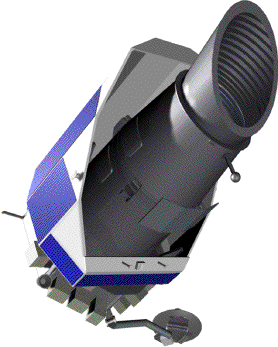Search this Site







Editor: Kris Cerone
 |
| Artists conception of Kepler spacecraft in flight. NASA graphic. |
Probing Distant Shoals
By Robert Gounley
The sailors of 500 years ago were a hardy bunch. Their maps were informed guesswork; their navigation tools were primitive. To sail even familiar waters required constant attention to landmarks, winds, and currents. Cautious sailors, typically the ones who survived to old age, kept a steady eye on the color of the water below, the types of clouds above, and the types of birds that flew between them. Even when their best reckoning told them they were far from land, subtle clues would urge them to test the water with a fathom line or change course before their ship ran aground on hidden shoals.
These skills were put to good use when European explorers first came to America and the islands of the Pacific.They had no maps at all and their ships were fragile. Wise captains knew to listen to the ancient seafarers. Where no land was apparent to untrained eyes, the old sailors could tell when the waters required careful probing to proceed. Some captains didn't listen and the wreckage of their ships line the boundaries of the world's great reefs.
Today, no old sailors have been to other planets around other stars. Today, we can not see those planets, but we know they are there.
Many stars travel in families with two or more stars traveling about each other. Even when one star is much larger than its companion, it isn't strictly correct to say that the small star rotates around the big one. They orbit about each other. Through careful measurements of the star's light, we can see the big star wobble very slightly back and forth in time to the smaller star's orbit, just as two dancers spin about a point between them.
Sometimes stars show the characteristic wobble, but no visible partner. This can be a sign that the star has a planet. Telescopes available today can only find planets that are extremely large, many times larger than Jupiter, or closer to their parent star then Mercury is to ours. Even so, over one hundred exo-solar planets have been detected since Dr. Geoffrey W. Marcy of California's Lick Observatory first discovered one ten years ago.
 |
| Drawing of Kepler spacecraft. NASA graphic. |
To find solar systems like our own, specifically small Earth like planets, require special observations. As planets orbit about their sun, they will periodically block a minute portion of light as they cross the disk - like detecting moths that pass in front of an automobile headlight. Finding such subtle variations will push telescope technology to its limits, but the potential payoff - finding planets like our own - is tremendous.
In 2006, NASA launches the Kepler spacecraft to begin this search. Carrying a one-meter telescope with sensitive photometer, it will scan nearby stars looking for hints of undiscovered planets. If our models of how solar systems form are correct, Kepler will find many planets as close to their stars as Earth is to the Sun.
Depending on their sizes, between 50 and 640 could be catalogued. Any one of them could be a world like our own - possessing life, and possibly intelligence.
If future generations invent starships to visit these worlds, I hope their captains give credit to the astronomers of the early 21st who first told them where to find Earth like worlds. My greatest regret will be that they will probably not be alive to join the voyage.
For more information, see:
Copyright © 1998-2003 Organization for the Advancement of Space Industrialization and Settlement. All Rights Reserved.